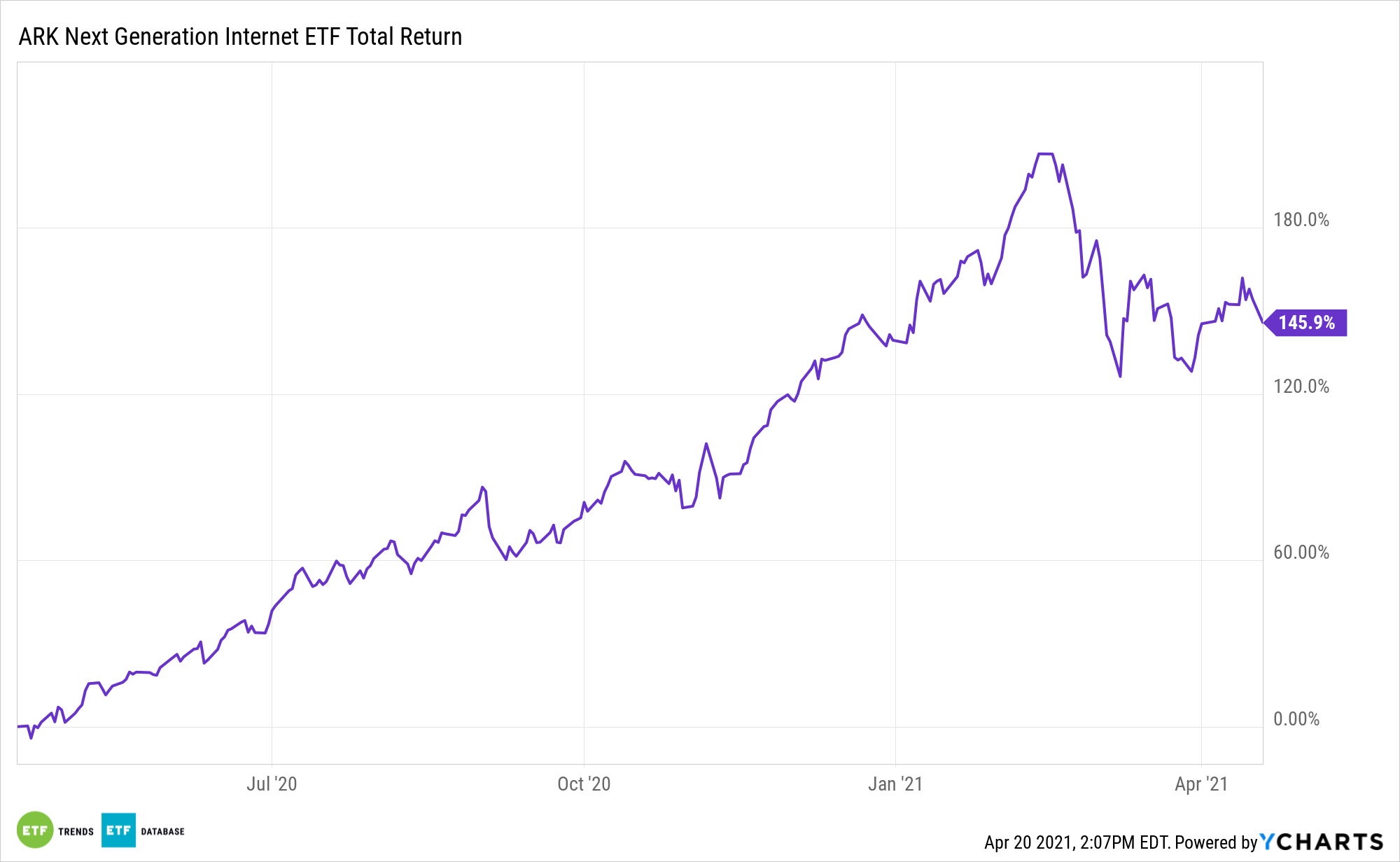The ARK Web x.0 ETF (NYSEArca: ARKW) may be a concentrated exchange traded fund, but it’s a credible play on a diverse set of disruptive growth and internet-driven themes, one of which is internet advertising.
ARKW aims to capture long-term growth with a low correlation of relative returns to traditional growth strategies and a negative correlation to value strategies. It serves as a tool for diversification due to its minimal overlap with traditional indices. The actively managed strategy combines top-down and bottom-up research in its portfolio management to identify innovative companies and convergence across markets.
On the advertising front, ARKW is levered to the decline of retail stores.
“Despite the success of vaccines, we believe the acceleration towards digital everything is likely to continue. Digital advertising solutions are a case in point. According to Kagan estimates, legacy advertising solutions declined significantly during 2020 while digital advertising scaled to roughly 50% of total US ad spending,” notes ARK analyst Nicholas Grous. “In our view, a decline in the US retail footprint could turbocharge the next leg of digital ad spending.”

ARKW Plus Advertising
There has been plenty of talk about the rise of e-commerce and online retail companies, with much of that coming at the expense of traditional brick-and-mortar retailers.
Be it e-commerce, fintech, healthcare innovation, streaming entertainment, or other concepts, the ARKW provides exposure to an array of seismic shifts taking place in the investing landscape.
“According to online figures and our estimates, US retail vacancy rates jumped 350 basis points last year to 13%, shrinking the retail rental market by $35 billion, from $312 billion to $277 billion, as the pandemic forced a shift to online shopping,” says Grous. “As with digital advertising, this trend was in place before 2020, suggesting that it will continue as merchants try to boost online sales.”
One way of looking at that assessment is that online advertising is poised to grow.
“If this thesis is correct, US digital ad spending could grow 17% at a compound annual rate, from $121 billion last year to $265 billion, during the next five years. As a result, and as shown above, relative to GDP, digital advertising at 1.04% would be higher than retail rent at 0.95% in 2025,” according to Grous.
For more on disruptive technologies, visit our Disruptive Technology Channel.
The opinions and forecasts expressed herein are solely those of Tom Lydon, and may not actually come to pass. Information on this site should not be used or construed as an offer to sell, a solicitation of an offer to buy, or a recommendation for any product.

